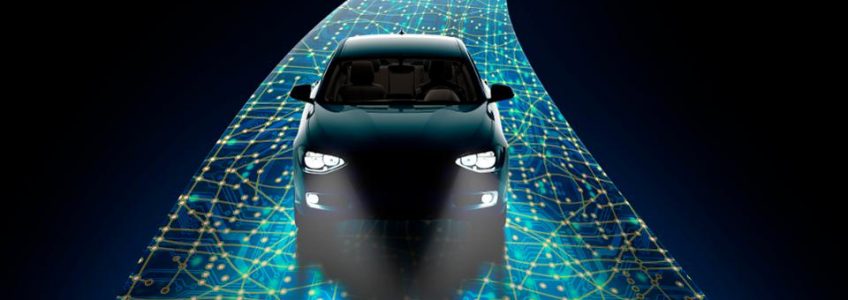
Drivers need maps to get where they’re going. As cars learn to drive by themselves, they’ll need maps, too.
As transportation responsibilities transfer from humans to machines, clear, reliable data is essential. A human can differentiate between a map and its surroundings, but to the Artificial Intelligence running autonomous vehicles, the map data is their world. The more data-rich the map, the safer the vehicle’s cargo, whether commercial or human. Standard maps cannot give daily updates on construction zones or changes in laws and driving regulations, but maps powered with specific geospatial data can. Even information like parking ramp usage can be used to improve the user’s experience. The geospatial information industry, with its diverse data handling ability, is poised to empower autonomous vehicles to take the wheel.
Some of the largest companies in the world are making investments with an eye toward the coming autonomous vehicle boom. Amazon’s recent heavy investment into companies like Rivian and Aurora comes alongside a commitment to begin electric vehicle delivery by 2021. In the automotive industry, companies like BMW are making sure their big data departments, which are used to further the pursuit of autonomous cars, are staffed with geospatial data experts.
The future they are preparing for is coming fast. In late 2019, a Plus.ai self-driving truck transported a load of Land O’ Lakes butter from California to Pennsylvania (2,800 miles). () It navigated the entire stretch of I-15 and I-75 all on its own, without a single intervention from the onboard safety driver.
Interstate trucking routes are typically predictable, long, straight stretches of highway. For a more dynamic environment, enhanced detection and imaging abilities are required. Self-driving passenger cars need to know the size, shape, and position of unexpected obstacles. And they need these details regardless of the weather. Enter: LiDAR.
Light Detection and Ranging, or LIDAR, gives cars a 360 degree, 3D image of their environment, using laser beams to define its surroundings. They usually take the form of a cylinder on a car’s roof. Today, units are capable of 1.3 million readings a second to create an image. While radar beams detect things over a broad swath to determine weather or large obstacles, LiDAR can define things down to a shirt button.
As cars drive around with LiDAR sensors, terabytes of information are generated. This scanning data can be used in pursuit of better mapping information. And, in turn, existing geospatial data can also help determine the accuracy of labels generated by AI.
Once the new data is organized, test divers of self-driving cars are sent back out with a new combination of scenarios, synthetic data, and machine learning algorithms. Then the cycle begins again.
It may seem strange, but cars are about to have the same real-world expectations of what maps must convey as we do.



